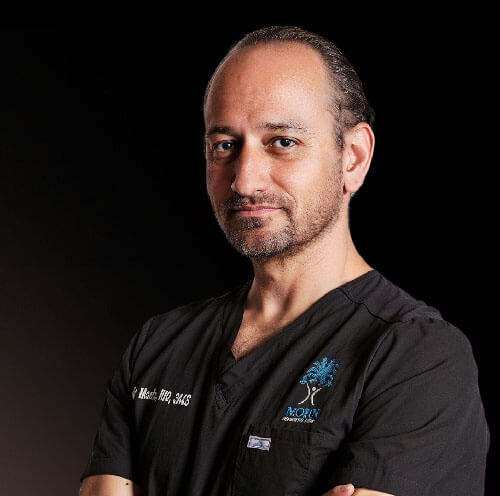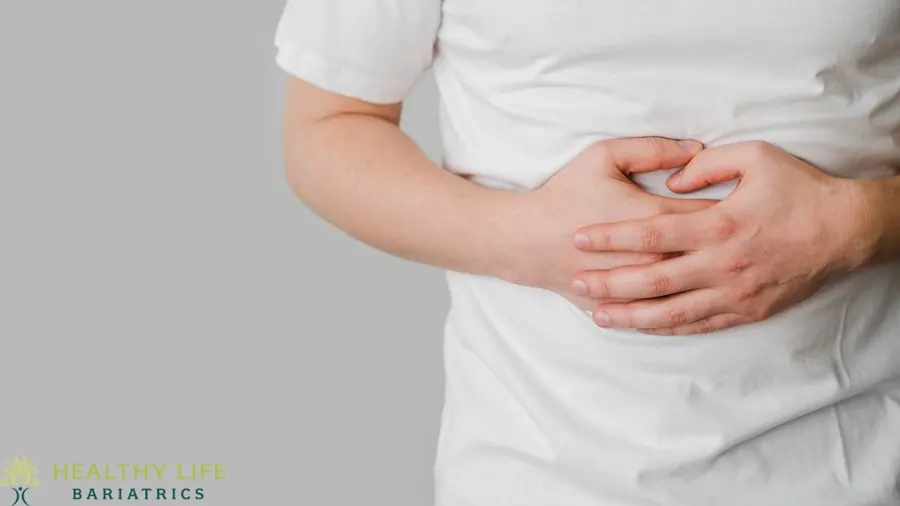
Expert Treatment for Acute Cholecystitis in Los Angeles, CA
Acute cholecystitis is characterized by gallbladder swelling and inflammation. It can be serious and usually results in hospitalization. Surgery is often the recommended treatment.
What are the Symptoms of Acute Cholecystitis?
This condition can lead to sharp pain that occurs on the upper right side of the abdomen and then spreads to the right shoulder. The affected portion of the abdomen is usually tender. Breathing deeply often makes the pain worse.
Is Acute Cholecystitis Causing You Pain?
The pain associated with acute cholecystitis can persist. For some, the extreme discomfort can last for hours. Other symptoms may include fever, sweating, loss of appetite, nausea, vomiting, and jaundice. You might also experience an abdominal bulge.
What Causes Acute Cholecystitis?
There are two possible causes for this potentially severe condition. We can group those causes into two categories.
Calculous cholecystitis is the most common category of acute cholecystitis, accounting for most cases. This condition occurs when a gallstone blocks the gallbladder opening (cystic duct). Biliary sludge can also contribute to duct blockage.
Biliary sludge combines bile and tiny crystals composed of salt and cholesterol. The duct blockage occurs when bile builds up inside the gallbladder. Too much bile increases the pressure inside the organ, leading to inflammation. For one out of five patients, the gallbladder becomes affected by a bacterial infection.
Acalculous Cholecystitis
This category of acute cholecystitis is less common but can be more serious. It usually manifests as a complication of a serious illness, injury, or infection that leads to gallbladder damage.
Assessing Acute Cholecystitis Symptoms
Inflammation of the bile-containing gallbladder chamber typically causes severe, steady pain, often with nausea and vomiting. The classic clinical manifestations include [3]:
- Sudden onset of constant intense right upper abdominal pain
- Tenderness to touch in the upper proper belly quadrants
- Low-grade fevers, chills, and sometimes jaundice
- Nausea and vomiting eventually in 70% of patients
These concerning localizing signs differ from intermittent colicky pains with cystic duct gallstone blockages by characteristic fever and constant pain. Seeking prompt medical assessments aids expedient acute cholecystitis diagnoses before disease advancement.
Risk Factors for Acute Gallbladder Inflammation
Recognized contributors to acute cholecystitis include:
- Preexisting Gallstones – Impactions inflame gallbladder mucosa initially.
- Obesity – Further hampers immobile stone expulsions.
- Infection - Local gallbladder or systemic spread to bile contents.
- High Estrogen – Impacts bile constituents and gallbladder dysmotility risks in females.
- Metabolic Syndrome – Type 2 diabetes and dyslipidemia correlate with increased prevalence.
- Family History – Over half cite other relatives with gallstones eventually requiring cholecystectomies [4].
While anyone can develop acute cholecystitis, prompt recognition, and management aim to prevent exacerbations or emergency complications among higher-risk groups.
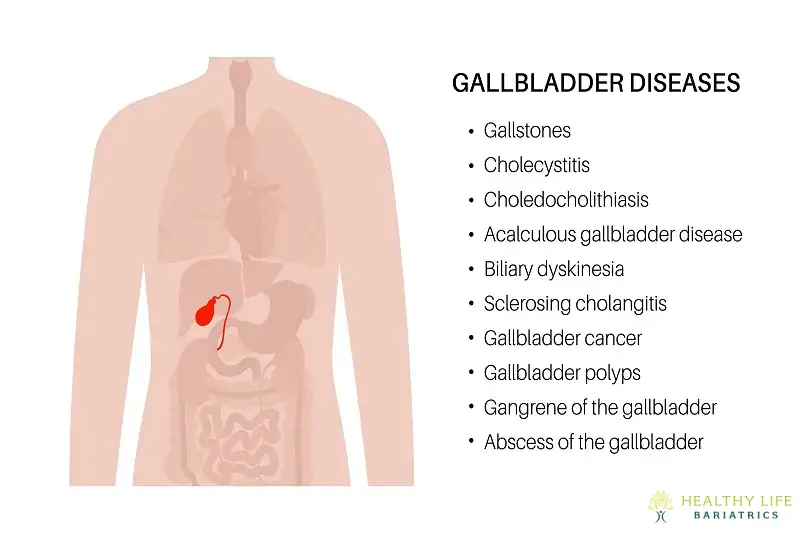
Acute Cholecystitis Diagnosis Testing
Physical exam documentation of exquisite right upper quadrant abdominal tenderness, fevers, tachycardia, and muscle guarding centers the initial concern for acute cholecystitis. Confirmatory testing typically includes [5]:
- Lab Tests: WBC counts show elevated leukocytosis with infection. Liver enzymes and bilirubin may rise from bile duct inflammation impacts nearby.
- Transabdominal Ultrasound: ~95% sensitivity revealing gallstones, gallbladder wall edema thickening over 5mm, pericholecystic fluid, or duct dilation indirectly signaling obstruction.
- CT Scan / Cholescintigraphy: This procedure further characterizes disease in challenging diagnoses or assesses complications like emphysematous infected gallbladder walls.
- MRCP: Non-invasive delineation of biliary tracts is sometimes warranted if less invasive imaging fails adequate visualization.
Once diagnostic criteria are reached, efficient interventions alleviate inflammation and prevent catastrophic complications.
Acute Cholecystitis Disease Progression Risks
Gallbladder inflammation often passes within a few days if the obstruction clears spontaneously, allowing bile drainage to resume. However, persistent blockages risk severe septic progression, tissue death, and structural compromises, mandating emergency surgery in up to 20% of hospitalized patients. Rare grave outcomes like gallbladder rupture spilling infected bile throughout the abdomen necessitate rapid open-operative interventions if necrosis and abscess formation develop unchecked by antibiotics.
Overall mortality averages 10% once acute acalculous cholecystitis develops infections, approaching 40% with delays past two days [8]. Appreciating risk trajectories prioritizes strategic care avenues, which will be discussed later.
General Approaches Treating Acute Inflammation and Infection
Most patients hospitalized with acute cholecystitis improve within 72 hours of supportive medical treatment aimed at:
- Pain Control – Patient-controlled intravenous narcotics or regional anesthesia blocks maximally treat discomfort until fever resolutions allow oral routes.
- Intravenous Fluids / Electrolyte Management – Vomiting and ongoing abdominal losses warrant repletion.
- Bowel Rest / Nutrition – Clear liquid diets advance as nausea abates, avoiding oral intake risks while severely inflamed.
- Antibiotics – Broad spectrum gram-negative/anaerobic antimicrobials treat infection effectively in over 85%. Culture-directed narrow-spectrum antibiotics continue if bacteremia is confirmed.
- Cholecystostomy Tubes – Placement using radiology guidance percutaneously into blocked gallbladders immediately decompresses shelf stones obstructing outlets in compromised patients too unstable for immediate surgery.
Today, experienced physicians manage acute cholecystitis urgently using well-orchestrated medical protocols like these, which aim to gracefully restore gallbladder functionality.
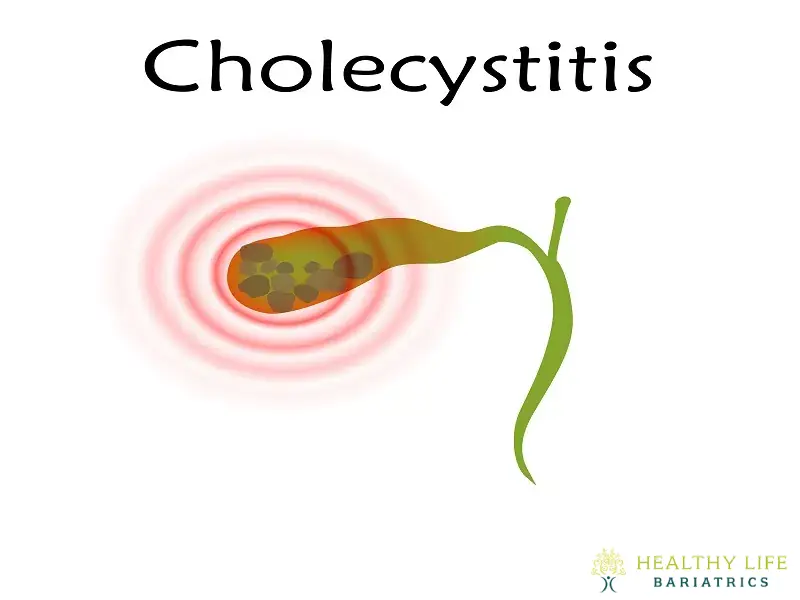
Evolving Los Angeles Acute Cholecystitis Practices
Traditionally, stabilized acute cholecystitis patients underwent delayed open cholecystectomy weeks later after awaiting inflammation resolutions. Subsequently, studies showed early laparoscopic surgery within a week of symptom onset proves safer with lower conversion rates, fewer complications, shorter hospitalizations, and reduced costs. Now, Los Angeles surgeons generally pursue one of two management pathways for acute cholecystitis cases depending on risk factors [13]:
Early Laparoscopic Cholecystectomy
- Occurs within 1-5 days of symptom onset usually
- Uses minimally invasive techniques if safely feasible
- Requires experienced laparoscopic operating skills
- Averts readmissions for interval gallbladder attacks
- Highest value option for straightforward cases
Delayed Gallbladder Removal
- Typically done semi-electively 4-8 weeks later
- Allows fullest medical stabilization of comorbid conditions first
- Minimizes surgical difficulty from distorted anatomy with swelling
- Remains indicated with comorbidity risks making early surgery dangerous
Implementing acute care surgery principles triaging intervention timing and magnitudes right-sizes clinical decision-making beneficially on case-by-case considerations.
Surgical Outcomes with Early vs. Delayed Cholecystectomy
Among higher-risk elderly comorbid populations, postponing gallbladder removal surgery posed only slight disadvantages compared to immediate operations in studies. However, younger, otherwise healthy cohorts do better having a single early definitive laparoscopic cholecystectomy, preventing repeat hospitalizations and urgent surgeries. Overall outcome comparisons show:
Early Laparoscopic Cholecystectomy
- Shorter hospitalizations averaging just 2 days
- Reduced gallbladder rupture/abscess formation likelihood
- Fewer open conversion procedure rates around 5-7%
- Lower operative complication risks generally
- Quicker returns achieving symptom relief targets
Delayed Lap Cholecystectomy
- Requires staged procedures spaced apart
- Increases later ER visits for pain attacks by ~30%
- Adds repeat hospitalization risks over waiting months
- May allow some stones to pass before surgery, possibly
- Averts near-term anesthesia stresses among frailer groups
Both options remain commonly utilized today among Los Angeles surgeons caring for acute cholecystitis patients based on aspects like cholecystostomy stabilization successes and patient-specific criteria warranting more deliberate operative timing 7-45 days out optimally. The best approach gets discussed collaboratively considering all determinant factors.
Recovery After Acute Cholecystitis Surgery
Those healthy enough for early laparoscopic cholecystectomy tend to heal rapidly within:
1 Week Postoperative
- Using just oral pain relievers and resuming regular diets
- Focusing incision site care with absorbable skin staple removals
- Slowly increasing activity while avoiding lifting limits
**2 Weeks Postoperative **
- Having residual soreness and swelling fully resolved
- Back to driving, deskwork duties, light exercises without restrictions
- Assessing any persistent uncommon symptoms needing evaluations
Later Months
- Gradually regaining stamina if delayed initially
- Following up long-term regarding chronic dyspepsia, etc
- Realizing 95% substantive symptom relief goals long term
Whereas postponed gallbladder removal pathways space apart hospitalizations first for acute care and then later addressing definitive surgical cure. After recovering, patients enjoy restored digestion and protection from recurrent agonizing acalculous cholecystitis attacks.
Conclusion: Acute Cholecystitis in Los Angeles, CA
Inflammation of the gallbladder often results from cystic duct blockages by gallstones obstructing concentrated bile drainage adequately. Resultant rising pressures and bacteria seeding bile contents instigate fever, with constant abdominal pain and tenderness confirming acute cholecystitis clinically. Though most initial episodes resolve medically, definitive surgery removes the diseased organ later on, ideally soon, through minimally invasive laparoscopic techniques for lasting solutions. Now, it is rare to manage non-operatively long-term.
Experienced surgeons triage patients presenting with acute gallbladder inflammation in Los Angeles hospitals via either early laparoscopic cholecystectomy if safely feasible or short-term stabilization using antibiotics and drainage tubes first, reserving removal for semi-elective delayed surgery in higher-risk situations based on individualized determinations. When care is navigated expertly, over 95% achieve complete recovery within a month after eventual gallbladder excision.
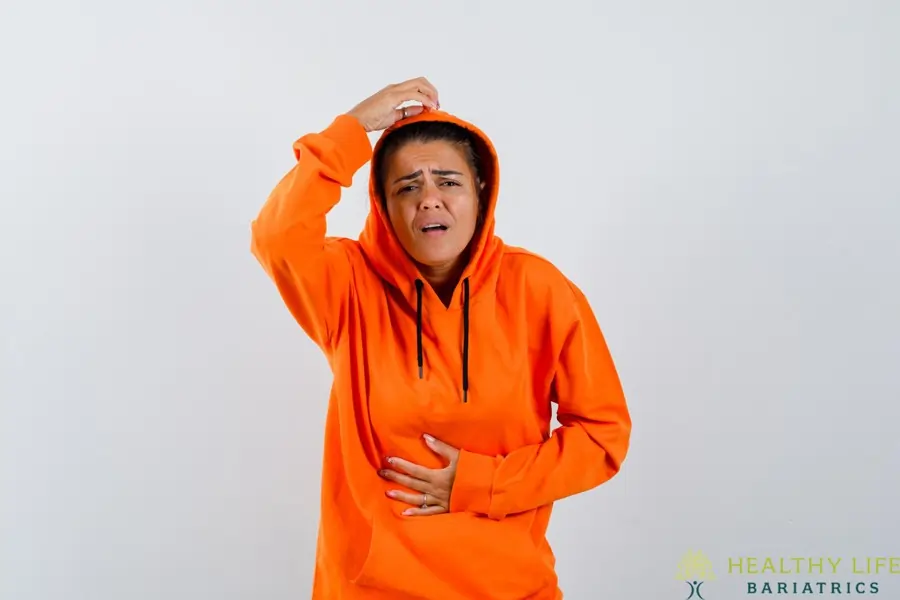
Expert Diagnosis and Treatment for Acute Cholecystitis with Dr. Babak Moein in Los Angeles, CA
Diagnosing an ailment like acute cholecystitis is essential as soon as possible. A consultation with world-class general surgeon Dr. Babak Moein can provide you with a diagnosis for the condition, and peace of mind. Get your questions answered and feel relieved that surgery for your acute gallbladder inflammation is only a short time away. Call Healthy Life Bariatrics to book your meeting with Dr. Moein from anywhere you are in Los Angeles, Encino, or Glendale, California – (310)861-4093.
Find Out More:

